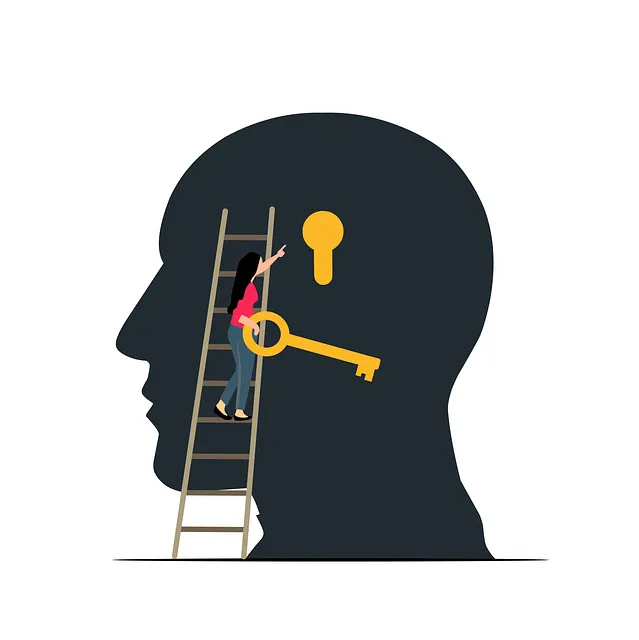In the digital age, mental wellness apps are crucial tools for emotional well-being, with features tailored to various concerns. The effectiveness of these apps has led to questions about insurance coverage, notably whether Parker and Kaiser provide options for mental health therapy. Developers must understand coverage disparities between insurers, aiming for broad appeal by integrating partnerships and evidence-based practices. Key aspects include safe spaces for expression, mood tracking, journaling, personalized dashboards, AI-tailored mindfulness exercises, and policy analysis tools. Effective marketing strategies leverage social media, influencer partnerships, and targeted ads while fostering user engagement through gamification and communities. Partnering with providers like Kaiser enhances app accessibility and credibility, addressing concerns like 'Parker does Kaiser cover mental health therapy?'
In today’s digital age, mental wellness apps are gaining prominence as essential tools for managing mental health. With a focus on accessibility and convenience, these applications offer therapeutic services that cater to diverse needs. However, understanding the landscape of insurance coverage is crucial, particularly when comparing providers like Parker and Kaiser for mental health therapy. This article explores the key features, development processes, and marketing strategies that contribute to effective mental wellness apps, addressing the pressing need for accessible care. Additionally, we delve into how these apps can bridge the gap left by limited insurance options, such as those offered by Parker vs. Kaiser.
- Understanding Mental Health App Needs in Today's Digital Age
- Exploring Insurance Coverage: Parker vs Kaiser for Therapy Services
- Key Features of Effective Mental Wellness Apps
- Development Process: Building a User-Centric Mental Health App
- Marketing and User Engagement Strategies for Mental Health Apps
Understanding Mental Health App Needs in Today's Digital Age

In today’s digital age, mental wellness apps have emerged as a crucial tool for individuals seeking support and resources for their emotional well-being. With an increasing demand for accessible and convenient solutions, developers are turning to technology to meet these needs. Understanding what users require is essential, especially when considering the diverse spectrum of mental health concerns. One prominent consideration is the integration of features that cater to specific issues, such as anxiety relief techniques or social skills training, which can greatly enhance user engagement and satisfaction.
The role of mental health apps in providing accessible therapy has gained significant attention, with many questioning whether insurance providers like Kaiser cover such services. This concern highlights the importance of app developers staying informed about healthcare trends and regulations. By offering evidence-based practices and tools, apps can become valuable allies in managing conditions like anxiety or fostering emotional intelligence, ultimately contributing to a healthier digital landscape.
Exploring Insurance Coverage: Parker vs Kaiser for Therapy Services

When considering developing a mental wellness app, understanding insurance coverage options is paramount, especially when integrating features such as self-care practices and crisis intervention guidance. Two prominent health insurance providers, Parker and Kaiser, offer distinct approaches to covering mental health therapy. Parker often has more flexible plans, allowing for a broader range of therapists and treatment methods, which can be beneficial for app users seeking diverse support options. In contrast, Kaiser tends to focus on comprehensive, in-network provider networks, ensuring affordability and accessibility within their system.
This disparity highlights the importance of thorough research during app development, particularly when catering to a wide user base. Developers should explore partnerships or integrations with both insurers to maximize coverage potential, thereby enhancing the app’s appeal and usefulness for those in need of mental health resources. Public awareness campaigns development can further educate users on their benefits, encouraging them to seek the help they need.
Key Features of Effective Mental Wellness Apps

Mental wellness apps have emerged as powerful tools for promoting psychological well-being, offering accessible and personalized support to users. When developing such applications, incorporating key features is essential to ensure their effectiveness. One of the primary aspects is providing a safe and confidential space for users to express their thoughts and emotions, much like seeking therapy from professionals. Apps should facilitate open communication, allowing individuals to track their moods, journal feelings, and set personalized goals. This self-reflection can help users identify triggers and patterns in their mental health journeys.
Additionally, integrating evidence-based techniques such as mindfulness exercises, positive thinking strategies, and conflict resolution skills can greatly enhance app functionality. These tools empower users with practical coping mechanisms to manage stress, anxiety, and depression. For instance, encouraging mindful breathing exercises or promoting positive affirmations can significantly contribute to improving mental wellness. By combining these features, mental wellness apps have the potential to reach a broader audience, including those who may not have access to traditional therapy services, like those covered by Parker does Kaiser, and raise public awareness about the importance of mental health through innovative digital solutions.
Development Process: Building a User-Centric Mental Health App

When developing a mental wellness app, creating a user-centric experience is paramount. The process begins with understanding the unique needs and preferences of users seeking support for their mental health. This involves extensive research to identify common challenges and goals, ensuring the app resonates with its target audience. Incorporating features like personalized dashboards, interactive therapy sessions, and progress tracking tools helps cater to individual user requirements.
A key aspect is integrating evidence-based practices and therapies, such as cognitive-behavioral therapy (CBT) techniques or mindfulness exercises, which can be tailored through AI algorithms. Additionally, partnering with mental health professionals for content validation ensures the app’s effectiveness. For instance, exploring partnerships with organizations like Kaiser can provide insights into coverage options for mental health therapy, further enhancing the app’s value proposition and appeal to users seeking comprehensive mental wellness solutions.
Marketing and User Engagement Strategies for Mental Health Apps

Marketing mental wellness apps effectively is crucial for reaching users who need them most, especially in light of growing awareness about mental health issues. Apps like those that offer mental health policy analysis and advocacy support or mental wellness journaling exercise guidance can attract users by highlighting their unique features and benefits. Leveraging social media platforms, influencer partnerships, and targeted online advertising campaigns can help increase visibility among the relevant audience.
Integrating user engagement strategies is also vital for maintaining app stickiness. Incorporating interactive elements such as personalized feedback loops, gamification features, and communities within the app fosters a sense of belonging and encourages continued use. Addressing burnout prevention through mindfulness exercises or stress management tools can further enhance user experience and loyalty. Remember that Parker does Kaiser cover mental health therapy? Such partnerships can also be leveraged to promote app accessibility and credibility.
Mental wellness apps have emerged as powerful tools in today’s digital age, addressing growing needs for accessible mental healthcare. By understanding user requirements, leveraging insurance coverage options like Parker vs. Kaiser for therapy services, and incorporating essential app features, developers can create impactful solutions. A user-centric development process, combined with effective marketing and engagement strategies, ensures these apps cater to diverse mental health needs while fostering long-term user commitment.



